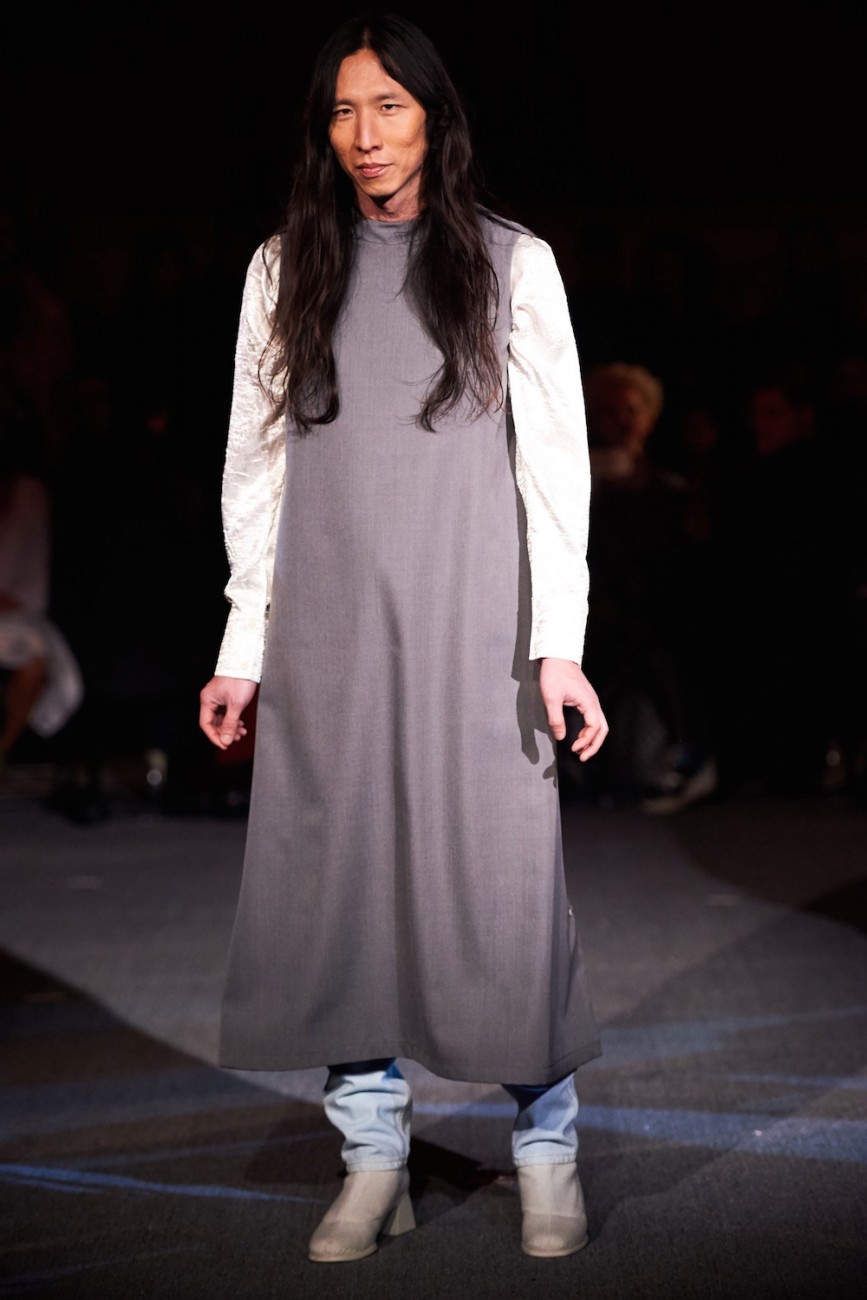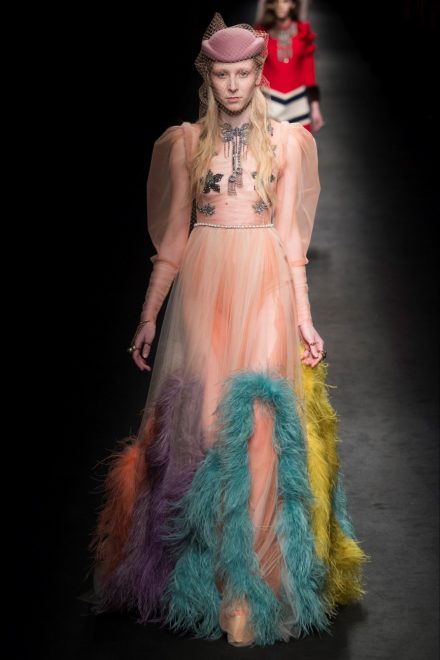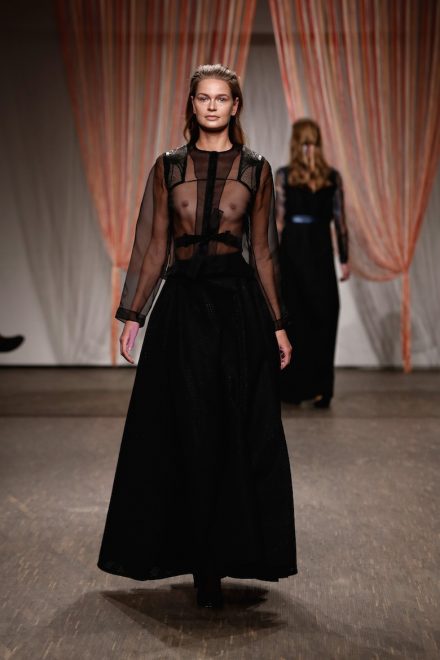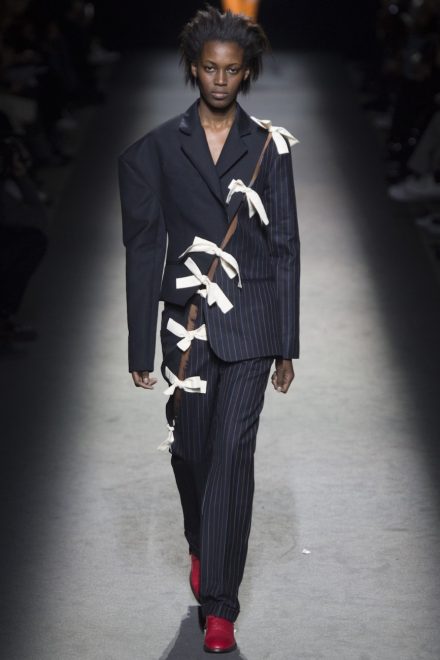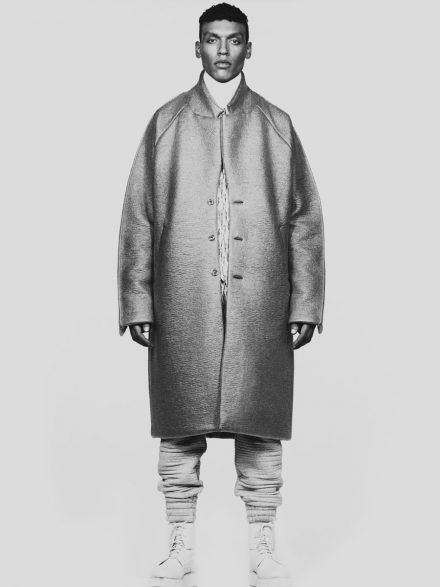 Though an ocean may separate us, only the most stubborn of ears could profess ignorance of the unprecedentedly meteoric rise of Eckhaus Latta, the current fodder for New York’s furiously wagging tongues. With somewhat atypical entries into fashion, the brand’s namesakes, Mike Eckhaus and Zoe Latta, graduates of Sculpture and Textile Design respectively, have gained acclaim for their refreshingly unpretentious approach, grounded first and foremost in the materials with which they work. Their innovative yet fundamental approach has yielded some of the most intriguing pieces to have emerged from the New York, nay global, scene, with faintly translucent cola-hued plastic jackets, liberally drawstringed jumpsuits and pieces made of fishing line as but a meagre selection of the highlights of the last 3 years.
Though an ocean may separate us, only the most stubborn of ears could profess ignorance of the unprecedentedly meteoric rise of Eckhaus Latta, the current fodder for New York’s furiously wagging tongues. With somewhat atypical entries into fashion, the brand’s namesakes, Mike Eckhaus and Zoe Latta, graduates of Sculpture and Textile Design respectively, have gained acclaim for their refreshingly unpretentious approach, grounded first and foremost in the materials with which they work. Their innovative yet fundamental approach has yielded some of the most intriguing pieces to have emerged from the New York, nay global, scene, with faintly translucent cola-hued plastic jackets, liberally drawstringed jumpsuits and pieces made of fishing line as but a meagre selection of the highlights of the last 3 years.
While Eckhaus Latta’s appeal is self-evident, it can prove hard to pin down, an accolade in itself. This in part comes down to the designers’ assertion that “the collections never have a source of inspiration” and its targeting of “people who are people”, a brazen subversion of dogmatic marketing paradigms propped up by the beaming of an ideal to be emulated through the wearing of a piece, and by distant cultural and historical references, serving more often than not as masks of pseudo-academic pretension. Yet it would appear that jaded industry heads and art kids alike are more than willing to jump on board with this new conceptually fluid approach to fashion, as attested to the swarm of editors lured from their cosy Manhattan warrens to neighbouring Queens, a yurt in front of MOMA PS1, the storied contemporary art institution’s off-island outpost, to be precise.
The fever pitch hype surrounding their latest presentation was immediately justified, a brazen display of a creative vision unshackled from market-governed structure. The clothes themselves, the main attraction of course, held as strong a footing in plain wearability as they did in any supposed ‘avant-garde’, the predominant silhouette being one relatively clean, yet decidedly ambiguous. A prime example of such came with the show’s opening look, a neat black dress distorted by a flowing swathe of similarly hued fabric draped across the garment’s front, the resultant asymmetry allowing for fluidity and depth. If one thing is immediately clear, it would be that, having spent the last few seasons honing their technique through a filter of diverse textural exploration, Eckhaus Latta is making a triumphant return to the deconstructionist plains whence they sprung.
A similar approach was returned to at numerous points in the collection, often going further in the juxtaposing of textures and tones, but no attempt was more engaging than a dress cobbled together from oblongs of candy pink felt, seams inverted so as to appear on the exterior, complete with loose hanging strips of fabric. Other pieces were taken above and beyond their rank, slyly tweaked and reinterpreted to yield exponentially greater impact; take for example the collarless felt coats with pockets detachedly fastened on the outside, the uneven, ramshackle even, sweater of hotchpotch knitted scraps, or the apron in acid gold velvet, slashed at the bust, sported by none other than friend and regular collaborator Juliana Huxtable.






















All images via Eckhaus Latta
